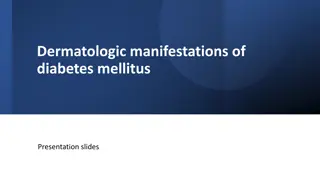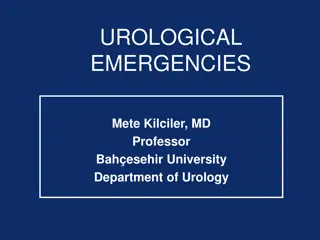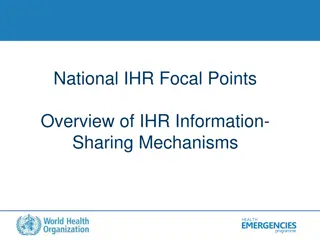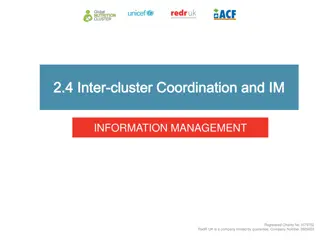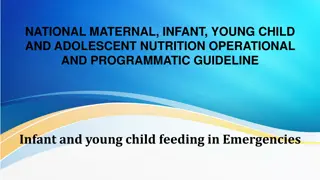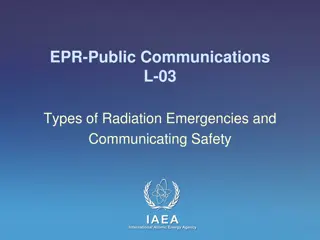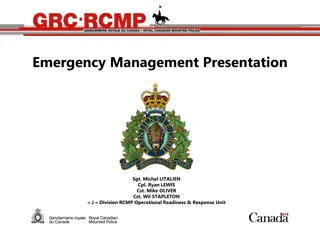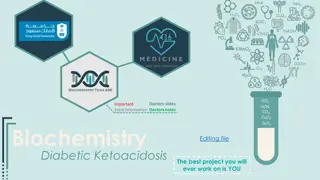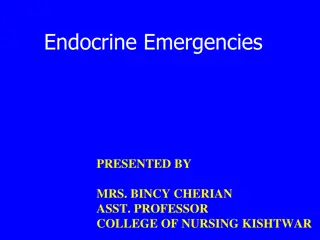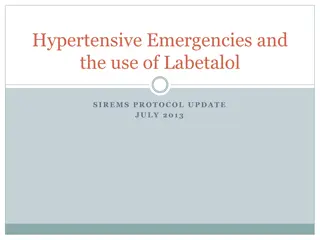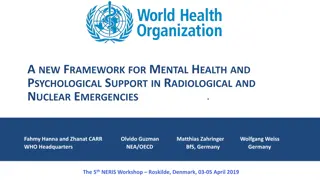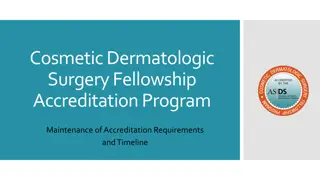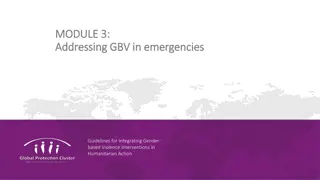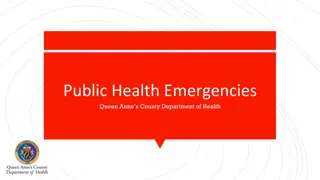Overview of Dermatologic Emergencies: Recognition and Management
In this course taught by Prof. Marwan Al Khawajah at King Saud University College of Medicine, the definition of emergencies, alarming morphological patterns, and specific conditions like urticaria, purpura, and bullous diseases are covered. Dermatologic emergencies are acute, unexpected, and dangerous conditions requiring quick action. Various skin manifestations are discussed, such as transient swellings in urticaria, bleeding into the skin in purpura, and blister formation in bullous diseases. Recognition and appropriate management of these conditions are crucial for optimal patient care.
Download Presentation

Please find below an Image/Link to download the presentation.
The content on the website is provided AS IS for your information and personal use only. It may not be sold, licensed, or shared on other websites without obtaining consent from the author.If you encounter any issues during the download, it is possible that the publisher has removed the file from their server.
You are allowed to download the files provided on this website for personal or commercial use, subject to the condition that they are used lawfully. All files are the property of their respective owners.
The content on the website is provided AS IS for your information and personal use only. It may not be sold, licensed, or shared on other websites without obtaining consent from the author.
E N D
Presentation Transcript
Dermatologic Emergencies Dermatologic Emergencies Course Course 394 394 Prof. Marwan Al Khawajah College of Medicine King Saud University.
Definition Emergency is --- Acute Unexpected Dangerous Requires quick action.
Alarming Morphological patterns. Urticaria / Angioderma Purpura / Echymosis Bullae / Sloughing Necrosis / Gangrene Exfoliative Erythroderma Syndrome Generalized/ widespread rashes in the acutely ill febrile patient
Urticaria / Angioedema Transient swellings and erythema due to vasodilatation and fluid exudation. Manifest by weals that develop rapidly and clear within hours. Can be life threatening esp. when associated with angioedema of the larynx. May take years to resolve.
Purpura Bleeding into the skin (petechiae, purpura, Echymoses) Caused by pathology: I - Inside blood vessel (disorders of coagulation II - Of blood vessel walls (Vasculitides) III Outside blood vessels (affecting supporting stroma eg: aging, drugs, Vit C deficiency, amyloidosis)
Bullous Diseases Blisters are circumscribed fluid filled skin lesions. Burns, bullous impetigo, herpes simplex and zoster, severe contact dermatitis and insect bites are common examples. Skin diseases presenting mainly with blisters are relatively rare but may be fatal eg: autoimmune and mechanobullous diseases.
Erythema Multiforme (EM) Stevens Johnson Syndrome (SJS) Toxic Epidermal Necrolysis (TEN) Spectrum EM is a cutaneous reaction pattern to several provoking stimuli including herpes simplex, bacterial infection and drugs. May be idiopathic.
The target (iris-like) lesions involve the hands and feet and less frequently the elbows and knees. There is now consensus that SJS and TEN are different from EM 20
SJS and TEN are severe variants of an identical pathologic process (apoptosis of kerayinocytes induced by a cell-mediated cytotoxic reaction: Haptens vs. Cytokines) and differ only in the percentage of body surface involved. 24
Both can start with macular and EM-like lesions; however about 50% of TEN evolve from diffuse erythema to necrosis and epidermal detachment. 25
Rare and life threatening. Most common in adults more than 40 years Male = Female Risk factors : SLE, HIV, HLA B12 Polyetiologic: Drugs (sulfas, anticonvulsants, allopurinol, NSAIDS, antibiotics), infections, immunization, chemicals and idiopathic. 26
Usually start with prodromes: fever, malaise, arthralgias 1-3 weeks after drug exposure and 1-3 days before mucocutaneous lesions. There may be tenderness, itching, burning, pain or parasthesia, photophobia, painful micturition, impaired alimentation and anxiety. 27
Rash starts on face and extremities, may generalize rapidely (few hours/days). Scalp, palms, and soles may be spared Mucous membranes invariably involved, 85% have conjunctival lesions. 28
Evolve later to: - Confluent erythematous macules with crinkled surface - Raised flaccid blisters - Sheet like loss of epidermis - Red, oozing dermis resembling second- degree burn 30
Histopathology: Full thickness necrosis of the epidermis and a sparse lymphocytic infiltrate. 35
Recovery begins within days, completed in 3 weeks. Pressure points and periorificial sites take longer Nails and eyelashes may be shed. 36
Systemic Involvement: Respiratory, GIT, Renal, CV, Anaemia, Lymphopenia, Neutropenia, Eosinophilia 37
Sequelae: Scarring, dyspigmentation, eruptive melanocytic nevi, abnormal nails, phimosis, vaginal synechiae, entropion, trichiasis, sicca syndrome, keratitis and corneal scarring, neovascularization, synblepharon, persistent photophobia, blindness. 38
Mortality: 30% for TEN 5 -10% for SJS Due to sepsis, GI hemorrhage and fluid/ electrolyte imbalance. Re exposure more rapid recurrence and more severe. 39
Differential dx: Exanthematous drug eruption, phototoxic eruptions, GVHD, Toxic shock syndrome, burns, SSSS, generalized bullous fixed drug eruption, exfoliative dermatitis. 40
Management: - Withdrawal of suspected drug(s) - in ICU or burn unit - IV fluids and electrolytes as for a third degree burn. - Symptomatic treatment - IV glucocorticoids/ immunoglobulins/ pentoxifylline - Treat eye lesions early (refer to ophth) - No surgical debridement 41
Bad prognostic factors Body surface area > 10% Serum Urea >10mM Age > 40 years Heart rate >120 Serum glucose > 14mM Serum Bicarbonate <20mM Malignancy 42
EXFOLIATIVE ERYTHRODERMA SYNDROME (EES) EES is a serious, at times life-threatening reaction pattern of the skin characterized by: - generalized and uniform redness - scaling (branny/ lamellar) - fever, malaise, shivers, pruritis, fatigue anorexia and generalized lymphadenopathy - loss of scalp and body hair, nail thickening and onycholysis 43
Usually > 50 years Male > Female In children results from atopic dermatitis or PRP 47
Etiology: - Pre existing dermatosis (psoriasis, eczema, id rxn, PRP, Pf) 50% - Drugs (eg. Allopurinol, CCB, carbamazepine, cimetidine, gold, lithium, quinidine) 15% - Lymphoma, Leukemia 10% - Undetermined (history/histology) 25% 48
Acute erythroderma is caused by drugs and is potentially fatal Erythroderma has profound effects on the entire body. eg: poikilothermia, fluid and electrolyte imbalance, high output cardiac failure,increased basal metabolic rate,hypoproteinemia, anemia due to reduced levels of iron, folic acid and other vitamins, endocrine, hepatic and renal complications, effects on hair and nails.
Clinical clues about etiology: Acute : drugs Areas of sparing : PRP Massive hyperkeratosis and deep fissures of palms/soles: Psoriasis., CTCL, PRP Sparing of scalp hair : Psoriasis, Eczema Variable erythema and scale thickness/ brownish hue/ large lymphnodes: CTCL 50





